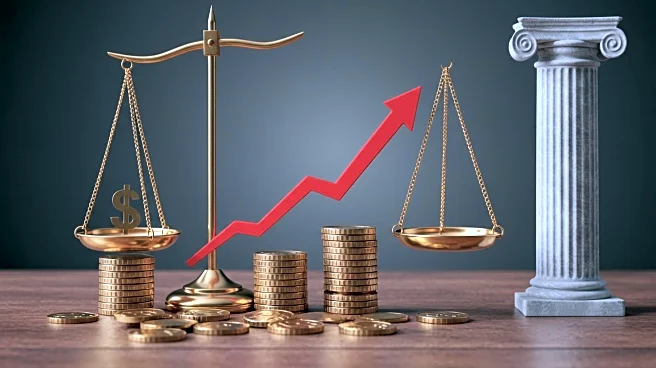What is the story about?
What's Happening?
The Federal Reserve is facing a high threshold for implementing significant interest rate cuts, despite pressure from the White House. Recent data, including the Consumer Price Index and Producer Price Index, indicate mixed signals about inflation trends. While overall price gains were subdued, a rise in service sector prices and a sharp increase in the Producer Price Index have raised concerns among policymakers. The Fed typically adjusts rates by a quarter-point, but larger cuts have been made recently. The current economic backdrop, with interest rates near neutral levels, complicates decisions on further reductions.
Why It's Important?
The Fed's interest rate decisions are crucial for the U.S. economy, affecting everything from consumer borrowing costs to business investment. The current debate highlights the tension between stimulating economic growth and controlling inflation. A significant rate cut could boost economic activity but also risks exacerbating inflation if not carefully calibrated. The Fed's cautious approach reflects the complexity of navigating these economic challenges, with implications for financial markets, businesses, and consumers.
What's Next?
The Fed's upcoming meeting in September will be pivotal, with potential rate cuts on the agenda. Policymakers will need to weigh the latest economic data and inflation trends against the need for economic stimulus. The outcome will be closely watched by markets and could influence future economic policy directions. The Fed's ability to balance these competing priorities will be critical in shaping the U.S. economic landscape.
AI Generated Content
Do you find this article useful?











